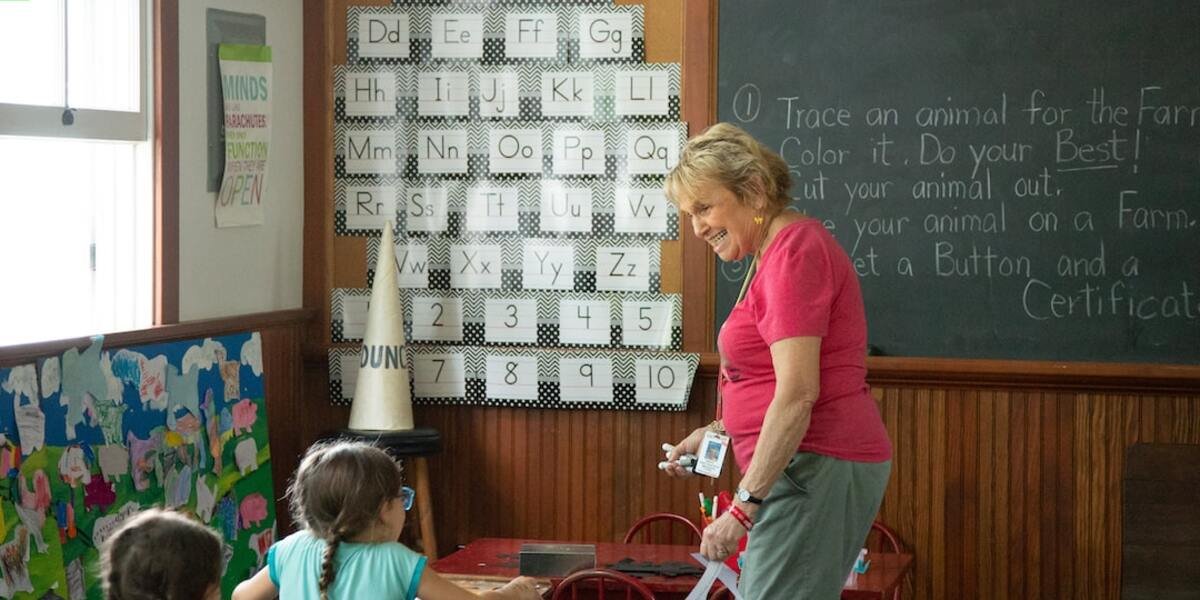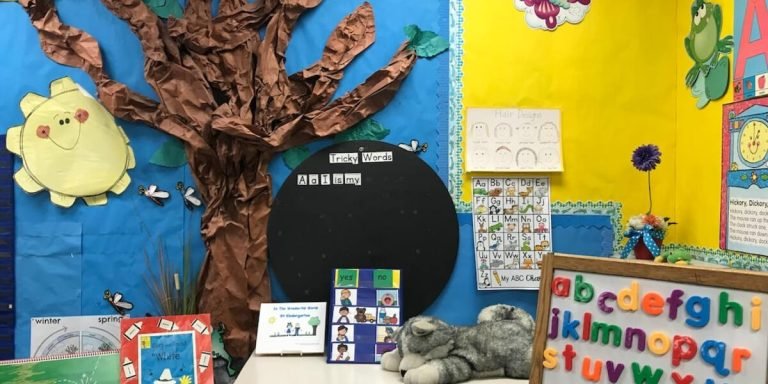Virtual Teaching: Harnessing Technology for Childhood Education
The digital era has ushered in a unique concept – “virtual teaching.” With the internet serving as an expansive data repository, educators are now leveraging technology to supplement traditional classroom instruction. In elementary school learning, this approach isn’t just about making education more engaging but also about meeting students where they spend much of their time – online.
Virtual teaching presents unprecedented opportunities and challenges for childhood education. This tool is fundamentally changing how information is delivered and received. Elementary level learners can explore subject matter beyond textbook confines while teachers monitor progress real-time—an innovative blend of autonomy and guided supervision that was previously unthinkable within four-walled classrooms.
Did you know?
A recent study by Education Week revealed that over 50% of educators leverage virtual reality for teaching, stating its potential to enhance learning experiences and facilitate comprehension in children as young as five.
Integrating Virtual Teaching into Elementary School Curricula
In the modern educational landscape, integrating virtual teaching into elementary school curricula has become not just relevant, but essential. The ongoing technological revolution demands that we incorporate digital tactics to instruction methodologies for improved learning experiences. With virtual teaching techniques firmly integrated in an elementary school’s curriculum, educators can broaden their instructional reach while making lessons more engaging and effective.
Virtual teaching provides immersive technologies like virtual reality (VR) or augmented reality (AR). These tools give children a chance to learn beyond what traditional textbooks offer. For subjects such as science or history where visualization plays a key role in understanding concepts, these techno-tools prove incredibly valuable.
Picture students exploring the solar system through VR headsets right from their classrooms – that level of interaction is unparalleled!
Equally important is ensuring this integration doesn’t overwhelm the young pupils’ cognitive capacities — it should enhance instead of overburdening them with information overload. Therefore developing pedagogically sound strategies around technology use becomes crucial when crafting an effective curriculum which balances conventional methods with progressive ones effectively.
Lastly but importantly are online safety measures – a non-negotiable aspect when plunging into any form of internet-based learning module especially concerning younger learners who may be unaware about potential pitfalls of unrestricted web-use example cyber-bullying etc…Strong firewall systems and age-appropriate content filters ought to be implemented on devices being used by students thus creating safe exploratory spaces that encourage free thought without unnecessary trepidation regarding security breaches.
Adapting Lesson Plans for Online Platforms
Virtual teaching is becoming a mainstay in education, particularly since the world pivoted to digital learning during past global events. When we think about elementary school learning and tailoring it for online platforms, there are several aspects that need consideration.
Firstly, using age-appropriate software and programs plays a crucial role in virtual teaching. Young minds absorb more when taught through visually appealing methods such as animations or interactive games within their distance-learning experience. Platforms like ABCmouse.com provide comprehensive curricula designed to help students from preschool through second grade.
Secondly, teachers will want to adapt their lesson plans according to these new formats without sacrificing educational standards or goals of the curriculum—this may involve restructuring lessons into smaller digestible segments suitable for shorter attention spans seen with younger learners often found online compared with traditional classroom settings.
Additionally,integrating real-time interactions between teacher-student can be beneficial in ensuring active participation and feedback reciprocation — which could essentially mimic classroom dynamics virtually. This might take the form of live sessions on video call platforms where discussions, Q&As occur much like they would face-to-face thereby keeping high engagement levels intact even remotely.
Remember too that changing technological tides mean educators should stay updated: participating regular professional development workshops refining skills navigating ed-tech tools ensure smooth transitions tech-based instruction effective immersive eLearning environments created eventually benefitting student’s academic growth long run while also aligning trends 2023 shows pure example technology integration education today’s era.
Incorporating Interactive Tools and Multimedia
As we are in the era of digital learning, incorporating interactive tools and multimedia into virtual teaching has become imperative to offer comprehensive education. Virtual teaching does not merely involve webcam-oriented classes; it’s about creating an immersive environment where students can learn by experience.
Interactive tools help young learners understand key concepts with visual illustrations rather than relying solely on textual information or verbal explanations. Applications that provide 3D images or live demonstrations enable students to grasp complex ideas more clearly. These high-tech resources often include quizzes, activities, or games as part of their package making learning fun for elementary school kids.
Multimedia acts like a bridge connecting traditional classroom teachings with contemporary methods adapted for virtual platforms. It includes text content supported by graphics, audio clips, video demonstrations and animations designed explicitly focusing children’s attention span . By integrating short educational videos into lesson plans teachers make subjects come alive sparking curiosity among youngsters leading them explore further.
Children today aren’t just using technology at home but also enhancing their tech-savviness at schools which is why photocopiers have been replaced by online note-sharing apps while blackboards have given way to smart screens under this new norm brought upon us due Covid-19 pandemic .
By introducing these facets early-on in children’s academic journey , you’re ensuring they exhibit effortless adaptability towards future technological advancements aligning themselves perfectly within the globally interconnected world.
Enhancing Student Engagement in a Virtual Classroom Setting
Virtual teaching has become a necessity in 2023, and effectively engaging students within this digital environment is crucial. In an era where technology integration plays an integral part of education, the concept of student engagement too undergoes immense metamorphosis. The virtual classroom setting provides educators with unique opportunities to enhance both learning and participation among elementary school learners.
One effective method for bolstering student interaction entails using interactive technologies that relate directly to lesson content. Applying multimedia tools – such as videos, simulations, or educational games – creates immersive experiences which make lessons more captivating for young minds. This encourages active involvement while subtly embedding knowledge through real-world context they can easily grasp.
Moreover, communication in a virtual teaching landscape uses different channels as compared to traditional classrooms’. Teachers need to leverage these platforms efficiently ensuring every child’s voice gets heard — be it via chat boxes during live sessions or discussion boards on learning management systems post classes. Encouraging frequent sharing of thoughts not only enlivens the session but fosters critical thinking skills essential for elementary pupils’ cognitive development.
Thus harnessing enabling features offered by cutting-edge EdTech ensures keeping students engaged significantly enhances their academic understanding within modern online pedagogical mechanisms.
Strategies to Foster Active Participation
In the era of virtual teaching, fostering active participation remains crucial. It plays a pivotal role in driving success for elementary school learning in 2023 and beyond. Technology Integration in Education has opened new avenues to enhance student engagement even within the confines of their homes.
The first strategy is encouraging independent exploration. Utilize online resources like educational videos or interactive websites related to your subject matter. Ask pupils to explore these tools independently before coming together as a class for discussions.
Next, introduce gamification into lessons. Students love games; hence integrating them into study materials can help boost excitement and involvement during sessions. There are plenty of online platforms that allow teachers to turn quizzes or assignments into competitive activities making learning enjoyable.
Peer-to-peer interaction must not be forgotten too – it’s another effective way to foster active participation amid remote education settings . Set up breakout rooms where students can collaborate on group tasks or projects—this method not only promotes teamwork but also improves communication skills among peers.
Utilizing Gamification for Better Learning Outcomes
In the realm of elementary school learning, utilizing gamification for better learning outcomes has proven to be a critical strategy. Especially in 2023, when virtual teaching is increasingly becoming the norm.
Gamification refers to employing game design elements into non-game contexts like education. It’s not about playing games per se but leveraging what makes games engaging and applying them to educational settings. The purpose?
To enhance student engagement and inspire improved learning results.
With kids being digital natives, technology integration in education feels natural rather than forced. Gamified approaches can add an element of fun while simultaneously reinforcing key concepts children need to learn.
For instance, imagine a mathematics class where students are asked to “earn points” by solving math problems or level up upon mastering specific skills; this type of environment cultivates both competition and collaboration among learners fostering their motivation levels massively.
Not only does it foster active participation from pupils but also enhances their cognitive processes as they immerse themselves fully in such interactive activities promoting problem-solving skills through challenges posed within these ‘gamified’ tasks making studies much more interesting enjoyable!
Moreover, rewards systems integral part gamification play significant role encouraging positive behavior academic excellence little adventurers quest knowledge! Badges stars earned excellent classroom performance go long way instilling sense achievement pride work promotes further dedication academics personal growth well-being altogether!
Assessing Student Progress Remotely in Elementary Education
In the realm of elementary education, virtual teaching can prove to be a challenge when it comes to assessing student progress. However, leveraging technology in novel ways can facilitate educators in this endeavor. As 2023’s cutting-edge digital tools permeate these traditional frameworks, their integration into education has become critical and inevitable.
One significant advantage of integrating such technologies is that they allow for real-time tracking and evaluation of students’ learning trajectory. This process far transcends merely grading assignments or quizzes; instead, teachers get valuable insight into how well concepts are grasped by students during online classes through interactive polls or responses collected via shared digital platforms.
Innovative applications now analyze children’s interactions with educational content during virtual lessons. These tools assess whether students actively engage in tasks or struggle with certain elements, helping teachers pinpoint areas needing intervention. Although distance creates new challenges for childhood education, strategic advancements such as machine learning algorithms and artificial intelligence integrate well with our expanding knowledge of individualized instruction. They enable smoother remote assessments than previously imaginable.
Developing Effective Online Assessment Techniques
As educators quickly adapt to the world of virtual teaching, developing effective online assessment techniques for elementary school learners becomes a vital necessity. It isn’t just about evaluating student progress but also fostering an efficient learning ecosystem that’s at par with in-person education.
Firstly, establishing clear objectives is essential – it acts as your lodestar guiding all assessment procedures you adopt. The key here is to define what ‘understanding’ would look like in every subject under study. This could involve applying learned concepts or demonstrating knowledge effectively through project-based assignments.
Secondly, embrace technology tools designed specifically for educational assessments; these can help turn complex evaluation processes into child-friendly yet reliable formats. For instance, a digital quiz app can offer fun quizzes while simultaneously tracking individual students’ performance over time and providing useful insights on strengths or areas needing more focus.
Thirdly, consider regular check-ins via video calls where kids showcase their work or engage in one-to-one discussions regarding lessons covered; this mimics real-world classrooms closely whilst reaping benefits from technological expertise available today.
Moreover, portfolios are another excellent way of assessing progress remotely by having students compile classwork samples across different subjects throughout the year—not only does it portray academic growth graphically but also imbues pupils with accountability sense towards their own learning journey—a valuable life skill!
Implementing Continuous Feedback Mechanisms
In an era where virtual teaching has taken center stage, Continuous Feedback Mechanisms have become a crucial part of elementary school learning. These mechanisms play an essential role in assessing student progress remotely.
Continuous feedback is not just about regular evaluation; it’s also about immediate and detailed insights into the students’ understanding level while giving them room for improvement right away. Implementing these systems can be challenging but with technology integration in education that we see today, this challenge becomes manageable.
Remember to keep your communication open as you commence the implementation phase. Set expectations clearly such that both children and parents are aware what they’re signing up for when adopting continuous feedback methods in their learning process.
There are several tools available online like educational platforms designed specifically to aid virtual teaching experiences by offering features like real-time updates on child’s leanings or daily/weekly alerts sent directly to either teacher or parent email accounts which allow tracking performance measures conveniently from home comfort.
Conclusion
In the grand scheme of things, virtual teaching has emerged as a powerful tool in childhood education. It is not just about keeping children up to pace with their curriculum during unprecedented times, but it’s also about utilizing innovative methods that harness technology for more engaging and interactive learning experiences.
We hope this insight into the brave new world of virtual teaching resonates with your interest in advancing childhood education. We’d be delighted if you continue exploring our website where we offer an abundance of information on educating young minds. Whether you’re seeking parent or educator support, know that our resources are here to guide every step along this rewarding journey.







